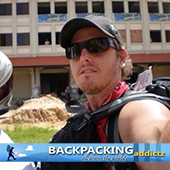- Population: 2.7 million (UN, 2005)
- Capital: Ulan Bator
- Area: 1.56 million sq km (603,909 sq miles)
- Major language: Mongolian
- Major religion: Buddhism
- Life expectancy: 62 years (men), 66 years (women) (UN)
- Monetary unit: 1 Togrog (tugrik) = 100 mongos
GEOGRAPHY & CLIMATE
“The Land of the Blue Sky” as it is called due to the vastness and the barrenness where the green of the grass and the blue of the skies are mostly the only visible sights to the traveller. They say in Mongolia, the land moves on forever. This is because the geography is unfenced and unbound. The terrain consists of the Gobi desert in the south, cold mountainous regions like the Altai, the Hangyan (Khangai), and the Hentiyn (Khentel) run across the north and west, while the rest is made up of steppes, that are home to thousands of whitetail gazelles and other species. Mongolia’s 1,564,160 km² total area is positioned in high, cold, and windy terrain. The highest point to date is the Khüiten Peak, one of the 5 peaks of Tavan Bogd Uul, with an altitude of 4,374 metres and the lowest, Hoh Nuur at an atypical high of 518 metres above sea level. Ulan Bataar is the nation’s capital known to be the capital with the lowest average temperature of −0.7 °C (30.7 °F), than any other in the world.
That being said, besides Mongolia’s geographic composition, the region’s precise global location between Russia and China (47 55 N, 106 55 E), resulted in its viciously cold climate and predisposition to sporadic harsh climatic conditions, the zud, that poses terrible challenge not only to the travellers, but the locals and their livestock more importantly. By classification, the 19th largest country suffers a extreme continental climate where markedly, the summers are short, extreme and hot (38 °C), whereas the winters are long and harsh (−40 °C), sometimes bringing in snowstorms most recently in 2009, killed 2000 livestock and 5 people. The best time to be here in Mongolia is during the summer for the simple reason that the winter is insufferably cold. Other natural hazards include dust storms and grassland/forest fires.
CULTURE & PEOPLE
The locals can be called “Mongolians”, but “Mongol Uls” is more politically apt, or even simply “Mongols” that constitute four-fifths of the population, whereas the minority consists of Kazakhs, Russians, and Chinese. In the last quarter of 2009, the country’s population numbered 3,041,142 roaming in that free space where 40% reside in the nation’s capital, thus ranking the wide-open nation as 3rd of the most sparsely inhabited countries in the world. Buddhism, Islam, and Mongolian traditional beliefs are the most extensively practiced religions. Christianity is a growing minor religion with no recently dated statistics, but an approximate of 24,000 Christians in 2005.
MONGOLIAN (Khalka) refers to the de facto language of the region spoken by 90% of the people. Nevertheless, other languages and dialects are also in use such as Turkic and Tungusic languages, and Chinese, of course. ENGLISH is gradually replacing Russian as the most frequently spoken foreign language. Some older educated Mongols can speak German from studying in East Germany, while a sizeable youth are fluent in Western European languages like French, Italian, and Spanish. One might have been flabbergasted to know that 97.8% of the total populace is literate. But if their fluency in a multitude of languages is indicative of anything, that is of their nomadic ways.
With 0.76% as arable land, no one might wonder why the nomadic lifestyles of the Mongolians persisted for 500 millenia to the 21st century. Perhaps it was an enjoyable way to live anyway. Mongolia’s economy is based on herding and mining as a result. All Mongols are nomads in a way. The best thing about this is one can turn up in Mongolia, have an adventure and get lost in the middle of nowhere, to be found by a nomad who will gladly invite you to his gher for a drink or meal before you up and leave to the next destination.
ATTRACTION
Mongolia is a perfect backpacker destination with its natural offerings that need no currency, for the most part. A traveller’s expenses might be allotted only for transportation which is in fact almost inexistent in Mongolia. By horse is the Mongolian way of going about and surely the best way to see of the unheard of city ruins and finding lost temples be it in Hövsgöl or the Selenge provinces. Gobi Desert is a MUST-SEE place when going to Mongolia, for the modest reason that its vastness and emptiness harbours incredible beauty and interest, as well as its dinosaur excavation sites. The Mongolian Serengeti in the east or the Altai ranges is ideal for a trek or a hike. Indeed, Mongolia is the hotspot for its sheer variety of off-the-beaten-path adventures.
FOOD
A sampling of Mongolian noodles might also be worth the trip. Although their cuisine isn’t famed worldwide due to lack of condiments, vegetables, and ingredients in general, Mongolian cuisine is stripped of science and art to serve the basic needs for the Mongol’s survival and warmth during the harsh cold seasons. Try the special meat of the Marmot ala Mongol (cooked with hotstones) if you must. The exquisiteness of the countryside will make any dish “gourmet”, or if not, at least make you forget bad gastronomic memories. It is not to be forgotten that Mongolian cuisine is distantly healthy compared to others such as American, Scottish, etc.
Genghis Khan’s Mongolia is far from the untouched image it portrays with over 57% of the country urbanized. In the middle of nowhere herders chat on mobile phones, surf the web in Ulaanbaatar cafes, or chill in bars. It has since been inching to modernization that now, in Ulaanbaatar (also Ulan Bator), the traveller can dial 101 for Fire Alarm, 102 for Police, and 103 Medical Emergencies.
Josh Boorman
Editor-in-chief
Backpacking Addictz
Twitter: @backpackaddictz
Backpacking Addictz is a website set up by backpackers for the use of backpackers. On this site you will find a lot of very valuable backpacking information surrounding different destinations and countries from around the world. Also very helpful backpacking tips and travel advice on planning a budget travel and backpacking adventure. You will also find an enthusiastic and insightful backpacking blog which is regularly updated with new posts and article.
Backpacking Addictz Travel eGuides are a fantastic, cheap and easy way to get hold of a vast amount of backpacking information prior to setting off on your backpacking adventure.







Leave A Response